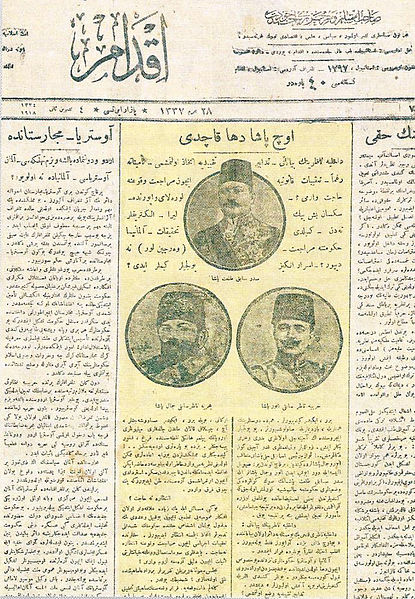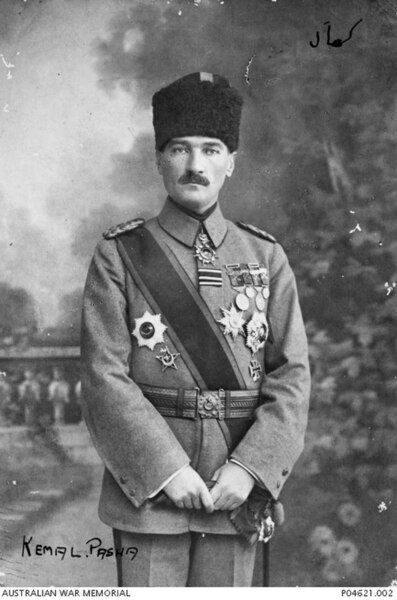The Kuva-yi Milliye were irregular Turkish militia forces active in the early period of the Turkish War of Independence. These irregular forces emerged after the occupation of the parts of Turkey by the Allied forces in accordance with the Armistice of Mudros. Later, Kuva-yi Milliye were integrated to the regular army of the Grand National Assembly. Some historians call this period (1918–20) of the Turkish War of Independence the "Kuva-yi Milliye phase".
Ethem the Circassian, his Circassian men (Kuva-yi Seyyare) and Mustafa Kemal Pasha in front of the main building of the station, who were on their way to the Yozgat rebellion (June 1920)
Turkish War of Independence
The Turkish War of Independence was a series of military campaigns and a revolution waged by the Turkish National Movement, after parts of the Ottoman Empire were occupied and partitioned following its defeat in World War I. The conflict was between the Turkish Nationalists against Allied and separatist forces over the application of Wilsonian principles, especially national self-determination, in post-World War I Anatolia and Eastern Thrace. The revolution concluded the collapse of the Ottoman Empire; the Ottoman monarchy and the Islamic caliphate were abolished, and the Republic of Turkey was declared in Anatolia and Eastern Thrace. This resulted in a transfer of vested sovereignty from the sultan-caliph to the nation, setting the stage for Republican Turkey's period of nationalist revolutionary reform.

Clockwise from top left: Delegation gathered in Sivas Congress to determine the objectives of the Turkish National Movement; Turkish civilians carrying ammunition to the front; Kuva-yi Milliye infantry; Turkish horse cavalry in chase; Turkish Army's capture of Smyrna; troops in Ankara's Ulus Square preparing to leave for the front.
Front page of İkdam on 4 November 1918, "The Three Pashas Escaped"
Allied occupation troops marching at the Grande Rue de Péra (İstiklal Avenue)
Mustafa Kemal Pasha in 1918, then an Ottoman army general





